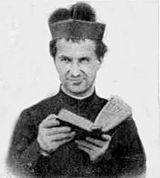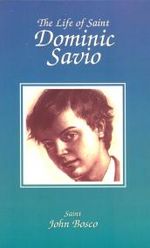Dominic Savio facts for kids
Quick facts for kids SaintDominic Savio |
|
|---|---|

A prayer card depicting St. Dominic Savio
|
|
| Confessor | |
| Born | 2 April 1842 San Giovanni, a frazione of Riva presso Chieri, Piedmont, Kingdom of Sardinia |
| Died | 9 March 1857 (aged 14) Mondonio, a frazione of Castelnuovo d’Asti, Piedmont, Kingdom of Sardinia (today Castelnuovo Don Bosco, Italy) |
| Venerated in | Roman Catholic Church & Episcopal Church |
| Beatified | 5 March 1950, Rome by Pope Pius XII |
| Canonized | 12 June 1954, Rome by Pope Pius XII |
| Major shrine | The Basilica of Mary Help of Christians in Turin (his tomb) |
| Feast | 6 May (formerly 9 March) |
| Patronage | choirboys, falsely accused people, juvenile delinquents |
Dominic Savio (Italian: Domenico Savio; April 2, 1842 – March 9, 1857) was a young Italian student of John Bosco. He was studying to become a priest when he became very sick and died at just 14 years old. He was known for being very religious and dedicated to his Catholic faith. Pope Pius XII made him a saint in 1954.
John Bosco thought very highly of Dominic. He even wrote a book about his young student called The Life of Dominic Savio. This book and other stories about Dominic were very important in helping him become a saint. Even though many people thought he was too young to be a saint, he was chosen because he showed "heroic virtue" in his everyday life. Dominic Savio became a saint on June 12, 1954, by Pope Pius XII. He was the youngest non-martyr (someone who dies for their faith) to become a saint in the Catholic Church for many years.
Biography
Most of what we know about Dominic Savio comes from the book written by his teacher, John Bosco. We also have stories from Dominic's family and friends.
Early life
Dominic Savio was born on April 2, 1842, in a small village called Riva, in northern Italy. His parents, Carlo and Brigitta Savio, named him Domenico at his baptism. The name Domenico means "of the Lord," and Savio means "wise." His parents were poor but hardworking and very religious. They had ten children.
When Dominic was two, his family moved back to their hometown of Murialdo. His parents made sure he had a good Christian upbringing. By the age of four, Dominic could pray by himself. He would often be found praying alone. John Bosco wrote that Dominic's parents remembered how he helped his mother, greeted his father, and always said his prayers and Grace before meals without being told.
At the village school
Father Giovanni Zucca, a priest in Murialdo, noticed Dominic when he was five years old. He saw Dominic regularly attending church with his mother. Dominic would even kneel outside the church to pray, even in mud or snow, if he arrived before it opened. Father Zucca also said that Dominic did very well at school. He was not only smart but also worked very hard. Dominic would not join other boys if he thought something was wrong. He would explain why he believed it was wrong.
At five, he learned to serve Mass. He tried to go to Mass every day and went to Confession regularly. He was allowed to make his First Communion at a young age and had great respect for the Eucharist.
First Communion
Back then, children usually received their First Communion at age twelve. (Later, Pope Pius X changed this age to seven.) After some thought, Dominic's parish priest allowed him to receive his First Communion at age seven. This was because Dominic knew his catechism and understood the Eucharist. He spent a lot of time praying and reading to get ready. He also asked his mother's forgiveness for anything he had done to upset her.
John Bosco wrote a whole chapter about Dominic's First Communion. He said that years later, Dominic would still talk about that day with joy, calling it "the happiest and most wonderful day of my life." On that day, Dominic made some promises in a "little book" that he reread often. John Bosco saw this book and shared the promises Dominic made:
- Resolutions made by me, Dominic Savio, in the year 1849, on the day of my First Communion, at the age of seven.
- 1. I will go to Confession often, and as frequently to Holy Communion as my confessor allows.
- 2. I wish to sanctify the Sundays and festivals in a special manner.
- 3. My friends shall be Jesus and Mary.
- 4. Death rather than sin.
At the county school
For his next level of schooling, Dominic had to go to the County School in Castelnuovo, about three miles (5 km) from his home. He was ten years old and walked to school every day. John Bosco wrote that a farmer once asked Dominic if he was tired from walking on a hot day. Dominic replied, "Nothing seems tiresome or painful when you are working for a master who pays well."
Dominic also refused to go swimming with his friends. He felt that in such a situation, it would be "easy to offend God." He believed his friends had behaved badly on a previous swimming trip. The head of this school, Father Allora, said about Dominic: "...Hence it may very well be said that he was Savio (wise), not only in name, but in fact, viz., in his studies, in piety, in conversation and his dealing with others, and in all his actions. ..."
Under John Bosco's mentorship
Meeting with John Bosco
Dominic's teacher, Father Giuseppe Cugliero, told John Bosco about Dominic. He suggested Bosco meet him during the Feast of the Rosary. So, Dominic and his father met John Bosco in October 1854. John Bosco wrote down their conversation in detail. He noted that Dominic was very eager to go to Turin with him and wanted to become a priest.
To test Dominic's intelligence, Don Bosco gave him a page from a Catholic book. He asked Dominic to memorize it and explain its meaning the next day. Ten minutes later, Dominic was already reciting the page and explaining it perfectly. This meeting started their special relationship. John Bosco agreed to take Dominic to Turin with him.
At the Oratory of St. Francis de Sales
John Bosco wrote that when Dominic arrived at the Oratory (a special school and home for boys), he immediately followed Bosco's guidance. Dominic worked hard and followed all the school rules. He loved listening to talks and sermons, even long ones. He would always ask questions if something wasn't clear. John Bosco also noted how obedient Dominic was to his teachers and how carefully he chose his friends.
This was in 1854, when the dogma of the Immaculate Conception of Mary was being officially defined in Rome. The Oratory was preparing to celebrate this special event. Don Bosco wrote that Dominic, following his confessor's advice, renewed his First Communion promises at the altar of Mary at the Oratory. Bosco said that from this point, Dominic's efforts to live a holy life were so clear that he started writing down all the things Dominic did for future reference.
John Bosco's mother, known as "Mamma Margaret," once told him about Dominic: "You have many good boys, but none can match the good heart and soul of Dominic Savio. I see him so often at prayer, staying in church after the others; every day he slips out of the playground to make a visit to the Blessed Sacrament. When he is in church he is like an angel living in Paradise."
Resolve to become a saint
About six months after Dominic came to the Oratory, he heard a talk about becoming a saint. John Bosco wrote that three main points from the talk deeply impressed Dominic:
- It is God's will that everyone should become a saint.
- It is easy to become a saint.
- There is a great reward in heaven for those who try to become saints.
This talk inspired Dominic to decide to become a saint. He wasn't sure how to live a saintly life, and this worried him for a few days. John Bosco noticed this and told Dominic to be cheerful again. He advised him to keep up his studies and religious practices and to make sure he still played games with his friends. When Dominic learned that his first name meant "belonging to God," his wish to be a saint grew even stronger. Dominic grew spiritually under Don Bosco's guidance. Clifford Stevens wrote in his book about Savio: "In other circumstances, Dominic might have become a little self-righteous snob, but Don Bosco showed him the heroism of the ordinary and the sanctity of common sense."
Attempts to do penances
To become a saint, Dominic tried to do physical penances. He would make his bed uncomfortable with small stones or wood. He would sleep with only a thin blanket in winter and even wear a hair shirt. He also tried fasting, eating only bread and water. When his teachers and John Bosco found out, they told him to stop. They said these things would hurt his health.
John Bosco told Dominic that for a schoolboy, the best penance was to do all his duties perfectly and humbly. He said that obedience was the greatest sacrifice. So, Dominic decided on an important rule for his life: "I can't do big things but I want everything to be for the glory of God." Don Bosco noted that from then on, Dominic never complained about food or weather. He happily accepted all suffering and was careful with what he saw and said.
The Immaculate Conception Sodality
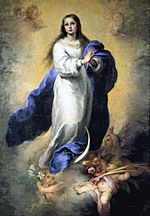
The official definition of the Immaculate Conception of Mary deeply affected Dominic. He wanted to create something at the school to remember this event. He felt he didn't have much time left to live. With his friends' help, he started a group called the Sodality of Mary Immaculate. Its main goal was to get Mary's special protection during life and at the time of death. Dominic suggested two ways to do this: (1) to honor Mary and encourage others to honor her, and (2) to encourage frequent Communion.
On June 8, Dominic and his friends read their rules together before Mary's altar at the Oratory. There were twenty-one rules, which John Bosco wrote down. They ended with a prayer to Mary for her help. They gave these rules to the rector, who approved them with some conditions.
One member of this group, Giuseppe Bongioanni, later became a priest. He founded the Sodality of the Blessed Sacrament, which became a common group in Catholic schools.
Preparation for a holy death
All the students with John Bosco practiced something called The Exercise of a Happy Death every month. This practice is still done today as The Monthly Day of Recollection. It was encouraged by Pope Pius IX. Part of it was to make Confession and Communion as if they were the last ones before death. Bosco noted that Dominic did this very devoutly. One day, Dominic said he would be the first among the group to die. In the month before his death, he became even more dedicated to his spiritual practices. John Bosco wrote that Dominic said, "Let me do what I can this year; if I am here next year I'll let you know what my plans are."
Failing health
Dominic's health was getting worse, but he still spent most of his time with his friends. He talked with them and encouraged those who were having problems. He also helped in the school's sickroom when his friends were admitted. Doctors suggested that Dominic go home to get better. But a few days later, Bosco found him back at the Oratory.
Even though John Bosco loved Dominic and wanted him to stay, he decided to follow the doctors' advice. Dominic had developed a bad cough. So, Bosco wrote to Dominic's father, setting his departure date for March 1, 1857. Dominic said he wanted to spend his last days at the Oratory, but he accepted the decision. He spent the evening before he left talking about spiritual things with John Bosco. (Bosco wrote down part of this conversation.) On the morning he left, Don Bosco noted that Dominic did the Exercise of a Happy Death with great devotion. He even said it would be his last time doing it. He said goodbye to John Bosco, asking him to add his name to a list for a special Plenary Indulgence Bosco had received from the Pope. John Bosco agreed. Then, Dominic said goodbye to his friends with great affection, which surprised them, as many didn't think his illness was serious.
Death

In his first four days at home, Dominic ate less, and his cough got worse. His parents took him to the doctor, who immediately ordered bed rest. The doctor diagnosed Inflammation and, as was common then, decided to perform bloodletting. The doctor cut Dominic's arm ten times in four days. Today, people believe this probably made his death happen faster. In his book, John Bosco wrote that Dominic remained calm during the whole procedure. The doctor told his parents that the danger had passed and he would get better. However, Dominic was sure he was going to die. He asked to make his Confession and receive Communion. His parents thought it wasn't needed, but they sent for the parish priest, who heard Dominic's confession and gave him the Eucharist.
After four days, even though the doctor and his parents thought he would recover, Dominic asked to be given the Anointing of the Sick to prepare for death. Again, his parents agreed to make him happy. On March 9, he received the papal blessing and said the Confiteor (a prayer of confession). Don Bosco wrote that Dominic remained peaceful and calm during these days. On the evening of March 9, 1857, after a visit from his parish priest, he asked his father to read him the prayers for the Exercise of a Happy Death from his prayer book. Then he slept for a while. He soon woke up and said clearly, "Goodbye, Dad, goodbye ... what was it the parish priest suggested to me ... I don't seem to remember ... Oh, what wonderful things I see ..." With these words, Dominic died. At first, his father thought he was just asleep.
Notable incidents in the life of Dominic Savio
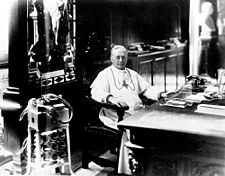
To give a full picture of Dominic's personality, Don Bosco wrote down several stories from his life.
Before he joined the Oratory
At the school at Mondonio
Don Bosco wrote about this story from Father Giuseppe Cugliero. One day, when the teacher was away, two of Dominic's classmates filled the stove with snow and trash as a prank. Fearing they would be kicked out, they blamed Dominic. Father Cugliero scolded Dominic harshly in front of the class, and Dominic stayed silent. The next day, the real culprits were found. When asked why he had stayed silent, Dominic said he thought he would only get a scolding, but the other boys might have been expelled. Dominic added that Jesus had remained silent when blamed unfairly, and he was trying to be like him.
At the Oratory
Resolves a conflict
At the Oratory, two of Dominic's friends had an argument and decided to fight by throwing stones. Since they were older and stronger than Dominic, he couldn't stop them physically. He tried to talk sense into them, but it didn't work. So, on the day of the fight, he went with them to the spot. Just before they started, he stood between them, holding up his crucifix. He asked them to throw their first stones at him. Ashamed, the two boys stopped fighting. Dominic then convinced them to go to Confession.
Custody of the eyes
John Bosco wrote that once, a boy visiting the Oratory brought a "magazine with bad pictures." A group of fascinated boys were looking at it. When Dominic found out, he grabbed the magazine and tore it up. He said, "You know well enough that one look is enough to stain your souls, and yet you go feasting your eyes on this."
Influence over his friends
John Bosco wrote that Dominic spent a lot of time with his friends. He encouraged them in their prayers, told those who swore to stop, and taught Catechism at Sunday School. Bosco also noted that Dominic would encourage his friends to go to confession and take Communion often. He even gave them advice during games. John Bosco especially mentioned two of Dominic's friends, Camillo Gavio and John Massaglia.
Devotions practiced by Dominic
John Bosco said that before Dominic came to the Oratory, he went to Confession and Communion once a month. After hearing a talk about the Sacraments, he chose a priest to be his regular Confessor. Dominic went to this priest for Confession until he left the Oratory. Dominic started going to the sacraments more often. By the end of that year, he was taking Communion daily, as his confessor advised. He had a special prayer intention for the Eucharist each day of the week. John Bosco noted that Dominic eagerly went with the priest when he carried the Viaticum (Communion for the dying). He also kept the custom of kneeling in the street if he saw a priest carrying the Eucharist, as was common in Catholic countries.
Incidents with special spiritual significance
"Distractions"
John Bosco wrote that Dominic sometimes had very strong experiences during prayer. Dominic described them like this: "It is silly of me; I get a distraction and lose the thread of my prayers and then I see such wonderful things that the hours pass by like minutes”. One time, he was missing from breakfast. The rector found him in the chapel, standing still and looking at the tabernacle. He didn't even realize that morning Mass had ended. Another time, John Bosco saw Dominic in the chapel, talking to God, and then waiting as if listening for a reply.
Special knowledge
John Bosco told a story about Dominic coming to his room one day and urging him to come along. Dominic led Bosco through many streets to an apartment building. He rang the doorbell and then immediately left. When the door opened, John Bosco found a dying man inside who desperately needed a priest to hear his last confession. Later, John Bosco asked Dominic how he knew about that man. But since the question made Dominic uncomfortable, John Bosco didn't ask again.
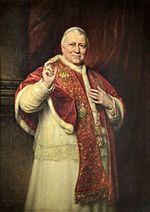
The vision of England
John Bosco wrote that Dominic once told him about a vision he had:
- "... . One morning as I was making my thanksgiving after Communion, a very strong distraction took hold of me. I thought I saw a great plain full of people enveloped in thick fog. They were walking about like people who had lost their way and did not know which way to turn. Someone near me said: 'This is England'. I was just going to ask some questions, when I saw Pope Pius IX just like I have seen him in pictures. He was robed magnificently and carried in his hand a torch alive with flames. As he walked slowly towards that immense gathering of people, the leaping flames from the torch dispelled the fog, and the people stood in the splendour of the noonday sun. 'That torch', said the one beside me, 'is the Catholic Faith, which is going to light up England'".
When Dominic said his last goodbyes, he asked John Bosco to tell the Pope about his vision, which Bosco did in 1858. The Pope felt that this vision confirmed the plans he had already made for England.
His mother's pregnancy
On September 12, 1856, Dominic asked John Bosco for permission to go home. He said his mother was ill, even though he hadn't received any message. Dominic's mother was expecting a baby and was in great pain. When Dominic arrived home, he hugged and kissed his mother, and then left. His mother felt her pain disappear, and Dominic's baby sister, Catherine, was born. The women helping with the birth found that Dominic had left a green scapular around his mother's neck. His sister Theresa later wore this same scapular when she was in labor. She said it had been passed around to several other pregnant women and was later lost.
Charles Savio's vision of Dominic after his death
People's respect for Dominic Savio grew even more because of a story his father told:
- "I was in the greatest affliction at the loss of my son, and was consumed by a desire to know what was his position in the other world. God deigned to comfort me. About a month after his death, during a very restless night, I saw, as it were, the ceiling opened, and Dominic appeared in the midst of dazzling light. I was beside myself at this sight, and cried out: "O Dominic, my son, are you already in Paradise?" "Yes," he replied, "I am in Heaven." Then pray for your brothers and sisters, and your mother and father, that we may all come to join you one day in Heaven." "Yes, yes, I will pray," was the answer. "Then he disappeared, and the room became as before."
The Life of Dominic Savio
Soon after Dominic died, John Bosco wrote his biography, The Life of Dominic Savio. This book helped Dominic become a saint. The original Italian version was so well written that it was used in many public schools to teach Italian. John Bosco also wrote other biographies, like Biography of Fr. Joseph Cafasso and The Life of Michael Magone.
Veneration

Some people thought Dominic was too young to become a saint. However, Pope Pius X insisted that he was not, and he started the process for his sainthood. Dominic Savio was declared Venerable in 1933 by Pope Pius XI. He was beatified (declared "blessed") in 1950 by Pope Pius XII, and finally declared a saint in 1954. Pope Pius XI described him as "small in size, but a towering giant in spirit."
See also
 In Spanish: Domingo Savio para niños
In Spanish: Domingo Savio para niños
- Saint Dominic Savio, patron saint archive
- Carlo Acutis, an Italian teenager who was also beatified for living a holy life in October 2020



